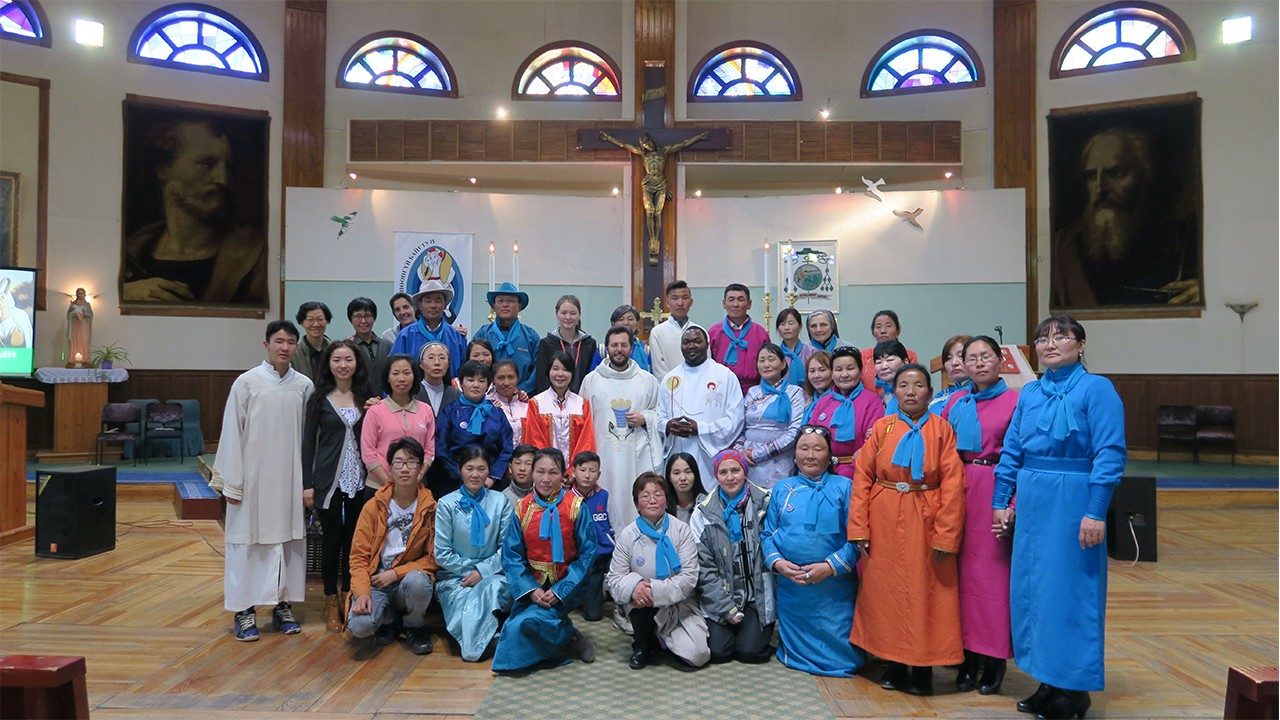Cardinal Giorgio Marengo, Apostolic Governor of Ulaanbaatar, expressed his happiness at announcing Pope Francis’ Apostolic Visit to the Asian country, from August 31 to September 4. “The visit of the Holy Father will certainly help to highlight the beauty of this land and the nobility of its people, keepers of very deep traditions.”
Deborah Castellano-Loboff – Vatican City
The “important” news was received with “deep joy”. An “important sign” for the Church in Mongolia, a “young and young community” that is now receiving great “encouragement”, both in terms of believers – about 1,500 – and dozens of missionaries. With these words, Cardinal Giorgio Marengo, Apostolic Governor of Ulaanbaatar, expressed to the Vatican media his great satisfaction with the announcement of the Pope’s Apostolic Visit to Mongolia, from 31 August to 4 September next. This will be Francis’ forty-third Apostolic Journey, following the one scheduled in Portugal at the beginning of August.
Your Eminence, how did you welcome the news of Pope Francis’ Apostolic Visit to Mongolia?
It is of great importance! First of all, we welcome this solemn confirmation with deep joy and gratitude. I have already received many enthusiastic messages from many people, here in Mongolia but also from different countries of the world. Many say: “What good news!” This is really good news. This trip is actually a very important sign for the Church in Mongolia, a sign of the Holy Father’s concern and closeness to our young and young community. We were already aware of this closeness, because the Pope has always shown a special interest in the ends of the world, as special places of witness. But having Peter’s successor on our side is a true encouragement to all believers and missionaries.
Which community would welcome the Pope?
The Apostolic Province of Ulaanbaatar, which covers the entire territory of the state, is home to about 1,500 local Catholic believers, as well as a few foreigners who are here on business or diplomatic missions. The missionary group consists of 75 missionaries, men and women, representing 10 religious congregations and 27 nationalities. A very diverse international community. The number of priests is 29, of which 2 are local; 36 nuns, in addition to 6 non-priestly and 3 lay missionaries. There are nine officially registered places of worship. Much mission work takes the form of human enhancement projects, also supported by cultural research and interfaith dialogue. The late Father Stefano Kim Seung Hyun, who passed away suddenly last week at the age of 55, hoping for a possible visit from the Pope, told me that it would likely be the only instance of a particular Church where individuals could meet the Holy Father in person! Together, we imagined that perhaps it would be possible to include all believers in one photo session with Pope Francis. The church in Mongolia is a poor and small church. We are few and don’t have many resources. But in small communities there is a strong and meaningful mutual interest, and the bonds that form between people are marked by a refined sense of truth and authenticity. This means that fraternity, for example, is very spontaneous, because people want the best for each other! There is something from the early church. This is not to say that there is no sense of history. Officially, the Church was born in Mongolia in recent years, but in a rapidly changing world and in a country with a long history behind it, traces of Christian presence can be found at certain times. People who come to visit us from abroad often have what I call “spiritual freshness.” As a missionary who has served this church for twenty years, I can attest to this freshness.
Christians in Mongolia are a minority. How is the relationship with other religions?
Interfaith coexistence is a legacy that comes from afar and has its roots in the tolerant policy of the Mongol Khan (12th century, ed.). Christianity has been known and practiced for about a thousand years, and we would like to perfectly reconnect with this ancient tradition. Last year we celebrated the first thirty years of the active presence of the Catholic Church in the country in the contemporary era. Interreligious dialogue is part of evangelization, not so much as a strategy, but as a means of witnessing to the Church. The relationship between religions is like friendship, a story that is always based on mutual trust and that is built up over time. It is about the experience of living together, of walking together. The concept of a minority arises from outside observation, but here people don’t think in those terms, they think about how to live faithfully to the gospel every day.
What fruits do you hope the Holy Father’s presence will produce for Mongolia and Asia?
It is important that Mongolia is famous in the world, precisely for its cultural and religious richness, as well as for its history. The visit of the Holy Father will surely contribute to highlighting the beauty of this land and the nobility of its people, custodians of the very deep traditions that have always characterized this region of Asia. For the small Catholic community, it will obviously be a gift of special grace, reflecting on the silent and fruitful work of the many missionaries who have given their lives for the Gospel and continue to do so, out of the limelight, for the only good. of the people present here. It is my hope that this journey will constitute another step in building relationships of trust and friendship, through which the Gospel is truly lived and witnessed.

“Infuriatingly humble social media ninja. Devoted travel junkie. Student. Avid internet lover.”


